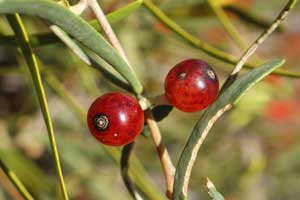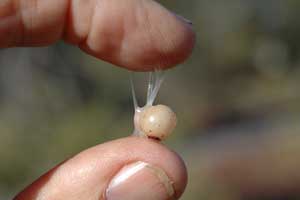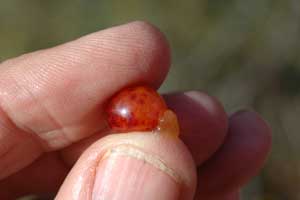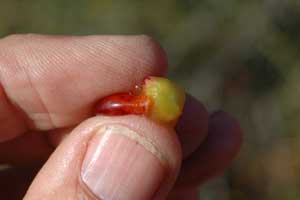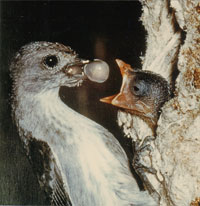Mistletoe dispersal - birds
(click on all these photos to enlarge) |
Dispersal and germination
So how do mistletoes get to the branches of trees? There is no direct connection to the soil at any stage of the mistletoe’s life cycle.
The mistletoe fruit is a single-seeded berry, often brightly coloured (above right), with striking adaptations for bird dispersal, germination and attachment. Under the outer coat of the fruit is a sticky layer of viscin, which is rich in glucose, and which envelops the seed (second right). Birds which feed on the fruits often have specialized feeding behaviour, swallowing the seed whole after squeezing it from the fruit coat (below right). Birds have been reported nipping the end off the fruit, as though removing a cap, prior to squeezing out the seed. Notable dispersal agents are the Mistletoe Bird (Dicaeum hirundinaceum, below) and some honeyeaters in Australia (Grantiella, Acanthagenys, Plectorhyncha), and the Phainopepla (Phainopepla nitens) and euphonias (Euphonia spp.) in the south-western United States.
 |
female feeding young with mistletoe fruit (left) |
![An Australian Government Initiative [logo]](/images/austgovt_brown_90px.gif)


